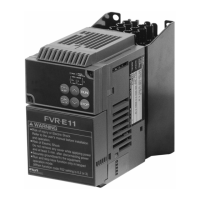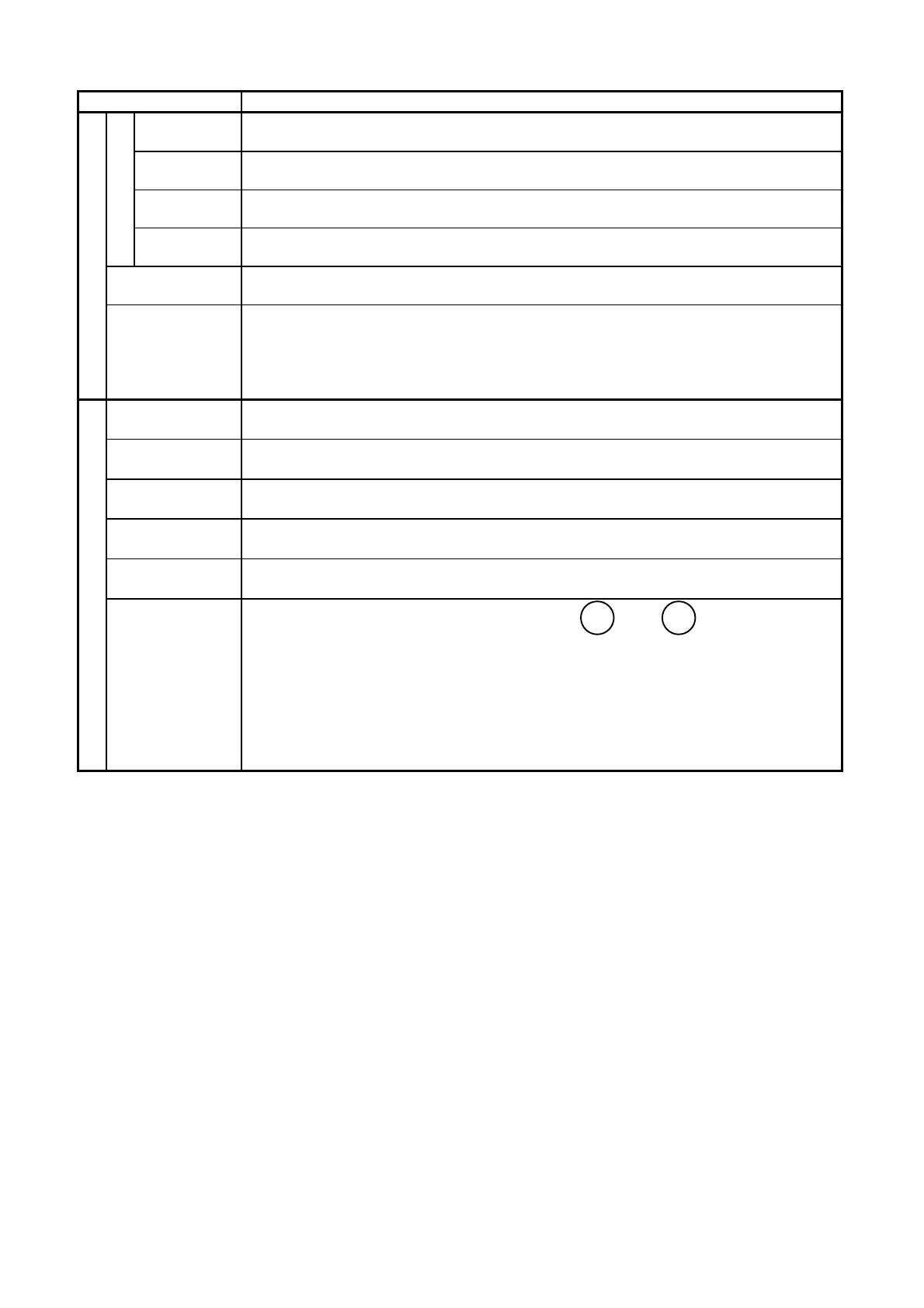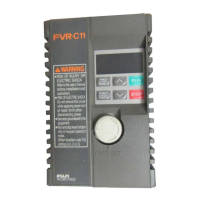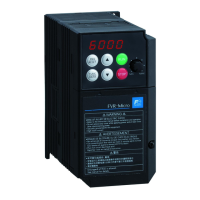9-3
9-2 Common Specifications
Item Detail specifications
Maximum
frequency
50 to 400 Hz variable
Base
frequency
25 to 400 Hz variable
Starting
frequency
0.1 to 60.0 Hz variable, Holding time : 0.0 to 10.0s.
Adjustment
Carrier
frequency
0.75 to 15 kHz (The carrier frequency may automatically drop to 0.75 kHz to
protect the inverter. )
Accuracy Analog setting: Within ± 0.2 % (25 ± 10 °C)
Digital setting: Within 0.01% (-10 to +50 °C)
Output frequency
Setting
resolution
Analog setting: 1/3000 of maximum output frequency
Keypad panel setting: 0.01 Hz (99.99 Hz or lower), 0.1 Hz (100.0 to 400.0 Hz)
Link setting : 1/20000 of Maximum frequency
(0.003Hz at 60Hz,0.006Hz at 120Hz,0.02Hz at 400Hz)
or 0.01Hz (Fixed)
Voltage/freq.
Characteristics
Adjustable at base and maximum frequency,
with AVR control : 80 to 240 V(200V class),160 to 480V(400V class)
Torque boost Automatic : Automatic torque boost can be selected with code setting.
Manual : Setting by codes 1 to 31 (Boost for Variable torque available)
Starting torque Starting torque 200% or above
(with dynamic torque vector turned on, during 0.5 Hz operation)
DC braking Braking time (0.0 to 30.0 s), braking current (0 to 100%), braking sta
frequency (0.0 to 60.0 Hz) variable
Control method
Sinusoidal PWM (Dynamic torque vector control) with "current vibration
suppression function" and "dead time compensation function"
Control
Operation
method
Keypad operation: starting and stopping with
RUN
and
STOP
keys.
(Keypad panel)
Digital input signal: forward (reverse) operation, stop command (3-
possible), coast-to-
stop command, external alarm, error
reset, etc.
Link operation : RS485 (Standard)
Profibus-DP,Interbus-S,DeviceNet,Modbus Plus,
CAN open (Option)

